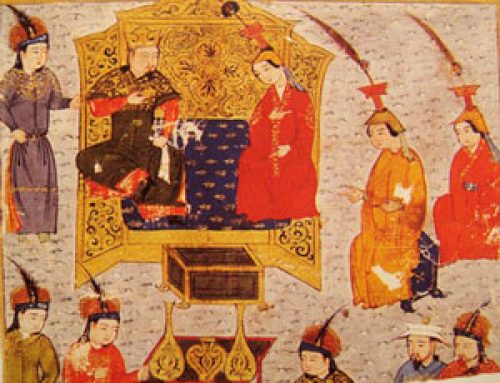
Spinning fishing nets: a Roman mosaic of a fishing net, Hippo Regius, Algeria (200s AD)
Hand spinning
All of the cloth used in the ancient world was made with thread produced by hand spinning very slowly. There are different methods: the spinning whorl can be at the top of the spindle or at the bottom, and in some cultures the spindle stays on the ground like a top, but the methods all work on the same principle).
Women spinning
All over the world, women did almost all of the spinning. Many little girls were good at spinning by the time they were five years old (Chinese foot-binding may have become popular because it forced girls to sit still and spin).
Cloth was very expensive
All women had to spin, because hand spinning was so slow that even if all women spent most of their time spinning for their entire lives, clothes were still very expensive. And women also had to spin for sheets, blankets, towels, napkins, and diapers. Old women who couldn’t even walk spent their days sitting and spinning.
Men spinning
People also had to spin thread for other uses, not just for clothing. Sailors and hunters needed a lot of thread and rope for fishing nets and hunting nets and ships. For spinning fishing nets, rope and other things men used, sometimes men did the spinning.

Greek woman spinning while riding a donkey
Spinning all the time
As with a yoyo, people who have been practicing for a while can spin while doing other things. People spin while they are walking somewhere, or riding a donkey. People spin while they are talking to their friends, and even in the dark after the fire is out for the night.
Different kinds of fiber
There are a lot of different fibers that people used to spin. Probably people began by spinning plant fibers, like hemp and flax (The kind of cloth you make out of flax is called linen). Not long afterwards, people began to spin wool as well, and then cotton and silk.
When you’re done spinning the thread, then you have to weave the cloth
Learn by doing: a spinning project
Spinning wheels
Bibliography and further reading about spinning:
Spin It: Making Yarn from Scratch, by Lee Raven and Traci Bunkers (2003). Projects using hand-spindles.
World Textiles: A Concise History, by Mary Schoeser (2003). For adults.
Women’s Work: The First 20,000 Years : Women, Cloth, and Society in Early Times, by Elizabeth Wayland Barber (1995). Not for kids, but an interested high schooler could read it. Fascinating ideas about the way people made cloth in ancient times, and why it was that way.




